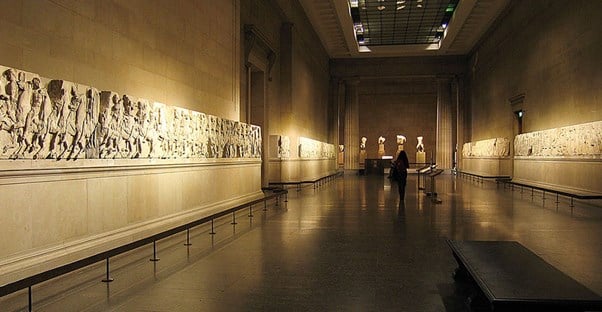Iran's 2,000-year-old Clay Tablets

- Where They Are: Chicago
- Where They Belong: Iran
Discovered by American archaeologists in Persepolis, around 300 clay tablets were discovered. Originally, Iran allowed the export with the expectation that the tablets would be translated and returned quickly. A group of 179 were returned in 1948; however, Iran wanted all of their artifacts back. Unrelenting, the researchers say that the “tablets will be out of the building soon” whether they’re put up for sale or seized by the government of Iran.
The remaining tablets are located in the Oriental Institute. While they’re not under any immediate threat of seizure, they’ve ramped up their scholarly pursuits by hiring more scholars to analyze the tablets. The reason these tablets are important is that they’re the primary source for understanding the internal workings of the Persian Achaemenid Empire, the largest empire the ancient world had ever seen.
Babylonian Ishtar Gate

- Where It Is: Germany
- Where It Belongs: Iran
This artifact was excavated by German archaeologists in 1899. They were found in a place that’s now Iraq, making the Ishtar Gate technically belong to the country. When they originally found the gate, they were in tens of thousands of fragments that filled as many as 900 boxes. The ornate gate was shipped to the Pergamon Museum of Berlin where they began construction.
It took a long two years before the team was able to complete 30 lions, 26 bulls, and 17 dragons. The reconstructions were then put on display at Pergamon Museum, where they’re currently on display. An Iranian archaeologist is quoted saying, “I have anger, but what can we do? I appeal to the German government to give our antiquities to Iraq.”
Iraqi Jewish Collection
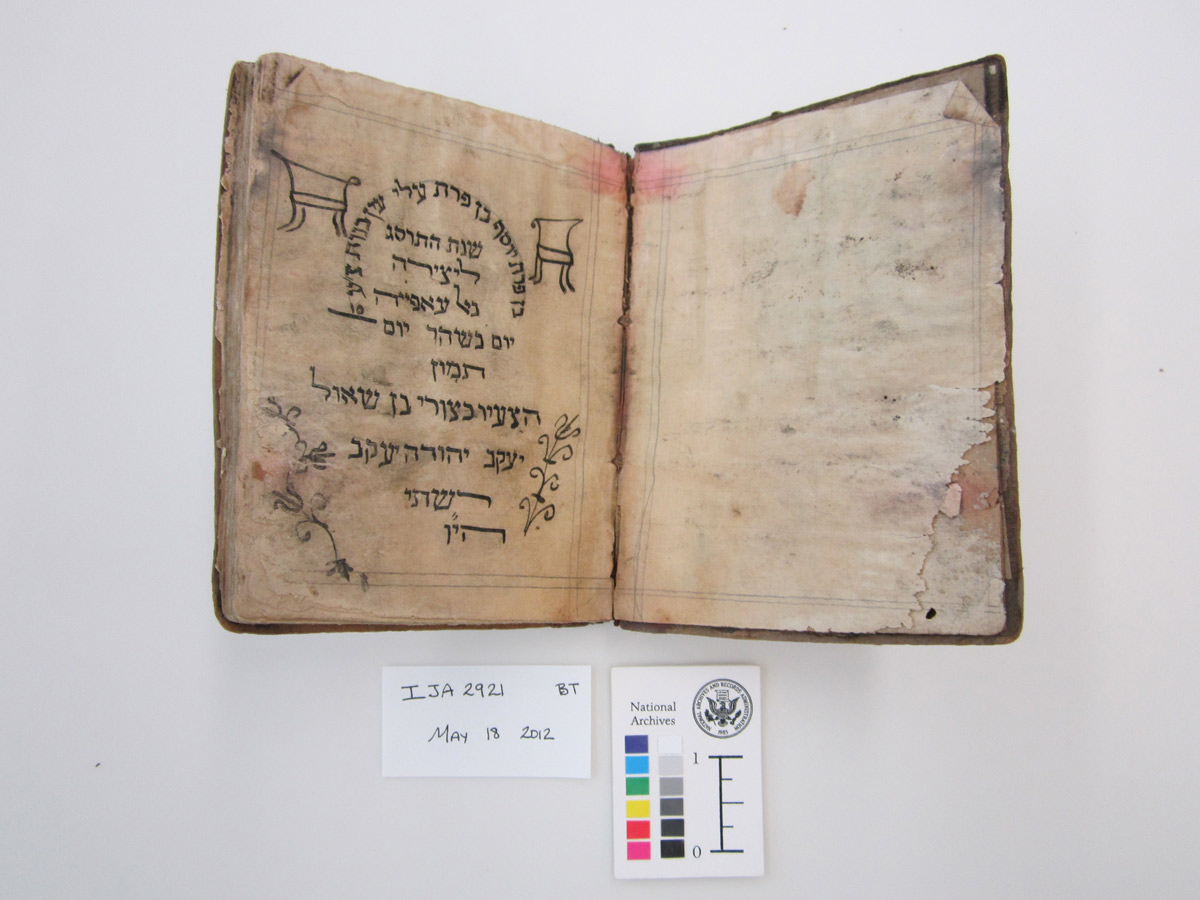
- Where It Is: United States
- Where It Belongs: Iraq
The Iraqi Jewish Collection, or Archive, is a collection of books and rare documents (including a 400-year-old bible) that are a testament to a 2,600-year-old community. It was in poor condition from neglect when it came to the United States, and quickly became preserved, cataloged, and digitized.
It was originally obtained by a United States Army team that found them in the basement of Saddam Hussein’s intelligence headquarters in 2003. Before that, they were forcibly obtained by Iraqi authorities as 150,000 Jews fled the country.
Bust of Nefertiti

- Where It is: Germany
- Where It Belongs: Egypt
Nefertiti is the most famous Egyptian Queen and the Great Royal Wife of Akhenaten. The 3,300-year-old bust was originally discovered in 1912 by the German Oriental Company, which was led by German archaeologist Ludwig Borchardt.
After the find, a meeting was set up between Borchardt and a senior Egyptian official to discuss the division of the artifacts. It’s suspected that the archaeologist concealed the bust’s real value to keep it for himself. This coup landed the bust as one of the “Top 10 Plundered Artifacts” according to Time magazine. Germany now claims that it’s too fragile to be moved.
Parthenon Marbles

- Where They Are: Great Britain
- Where They Belong: Greece
Also known as the Elgin Marbles, these large slabs of marble date back to the Classical Greeks. They were made by Phidias and his assistants in 447 B.C. They remained in place until 1816 when they were plundered by a British envoy. They removed them from the Parthenon at the Acropolis of Athens.
The slabs were shipped to the British Museum, where they currently sit today. After gaining independence, Greece began to restore its monuments and requested the return of the Parthenon Marbles. England refused, but Greece hasn’t backed down. Even UNESCO stepped in and offered to mediate the dispute, but the British Museum turned down the proposal.
Imperial Treasures

- Where They Are: Great Britain
- Where They Belong: China
In the 19th century, thousands of artifacts were looted from Beijing during the Boxer Rebellion. About 23,000 objects made their way to the British Museum where they are now housed.
China claims the artifacts were taken from Beijing’s Old Summer Palace when it was burned and looted by British troops 150 years ago. They’ve now formed a team in an attempt to demand the inspection of the artifacts. Until then, they hope to create a comprehensive catalog to document what’s missing.
Koh-i-Noor Diamond

- Where It Is: England
- Where It Belongs: India
The Koh-i-Noor Diamond is truly a beautiful gem, but it doesn’t belong in England. It was seized by the British Empire through the East India Company as the spoils of war. India has requested that the diamond is returned to “atone for Britain’s colonial past,” but David Cameron refuses. He states that he doesn’t believe in “returnism,” as he calls it. Furthermore, the British government claims the diamond was obtained rightfully through the Last Treaty of Lahore.
The diamond is one of the largest in the world at 105-carats and was set in Queen Elizabeth the Queen Mother’s crown. Now, Queen Elizabeth II still wears the crown.
Native American Scalps

- Where They Are: Germany
- Where They Belong: United States
With the return of the Kennewick man in 2017, there was hope that Native Americans would have an easier time obtaining the remains of their ancestors. Unfortunately, that isn’t the case. Germany is currently in possession of Native American scalps in the Karl May Museum.
After members of tribes contacted the U.S. Embassy, they were promised the return of the remains after writing a letter explicitly asking for them. After writing the letter, the museum still refused to send the scalps home. To make matters worse, Germany and Europe have a ban on the export, transport, or ownership of cultural artifacts, but the museum refuses to budge.
Sacred Artifacts of the Tlingit Indians
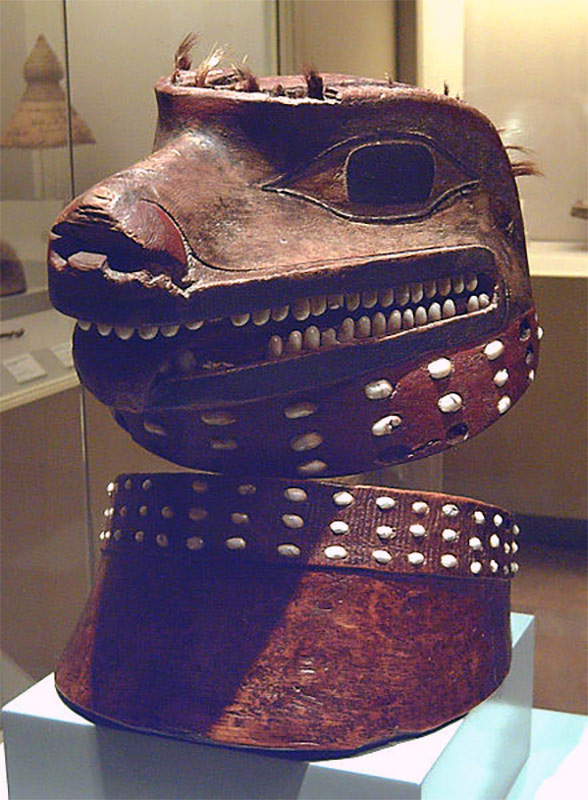
- Where They Are: Massachusetts
- Where They Belong: Alaska
In the 19th century, Christian missionaries took a sacred fishhook from the Tlingit Indians of Southeast Alaska along with 158 other artifacts. Currently, the Andover Newton Theological School in Massachusetts is in possession of these artifacts, but they’re being stored in the Peabody Essex Museum in Salem. The school has tried to sell some of the items but were restricted through NAGPRA, which is a law that mandates the repatriation of Native American remains, funerary objects, sacred objects, or objects of cultural patrimony.
The reason they haven’t been returned is that NAGPRA requires cultural affiliation for repatriation. While the Tlingit peoples claim tribal affiliation is undeniable, the school says otherwise. The Tlingit now request the return of their fishhooks, but still, no returns have been made.
Benin Bronzes
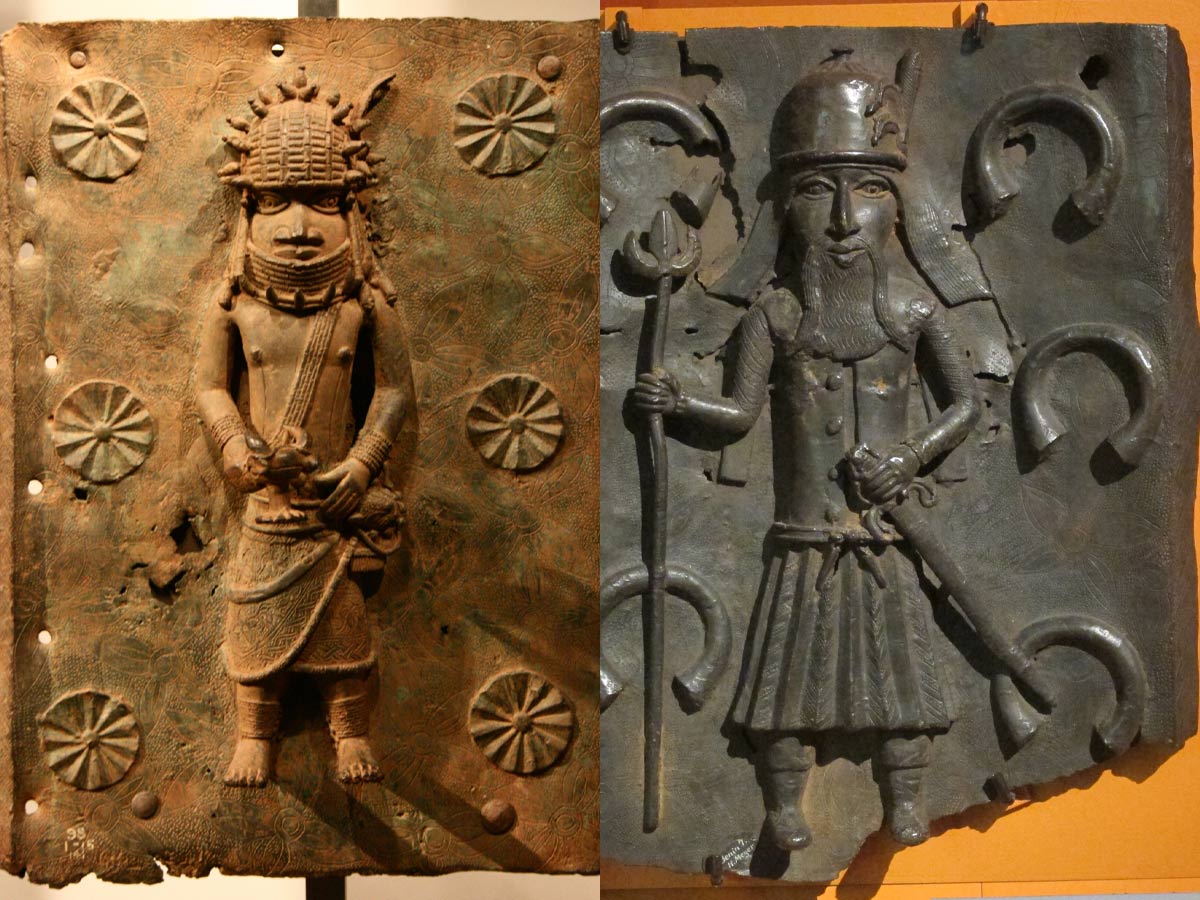
- Where They Are: Europe
- Where They Belong: Nigeria
The Benin Bronzes are metalworks from the former Kingdom of Benin by the Edo People. Now modern-day Nigeria, the bronzes were taken by the British during their colonial expeditions and control of African nations. The pieces have since been split among multiple museums across up to 4 different nations.
Thankfully, France has elected a new President, Emmanuel Macron who has promised the return of the artifacts within five years. While we hope the promise plays out, the artifacts are still kept away from home. Will the objects be returned? Only time will tell.
British Museum, CC BY-SA 3.0, via Wikimedia Commons; I, Sailko, CC BY-SA 3.0, via Wikimedia Commons
Maqdala Ethiopian Treasures

- Where They Are: Britain
- Where They Belong: Ethiopia
The return of the Maqdala Ethiopian Treasures has been a long-standing battle for decades now. The items were looted from the country during 1867 with over 500 items being stolen. Over the years, some countries have returned items, including Italy. Britain (the country with the most items) has recently agreed to a long-term loan for an Ethiopian exhibition, but this is obviously different than complete repatriation.
Because of this, a website has been set up, The Association for the Return of the Maqdala Ethiopian Treasures. Here, AFROMET keeps track of the items that should be returned, their location, and what these items are.
Hoa Hakananai'a

- Where It Is: Britain
- Where it Belongs: Chile
One of the famous moai statues was removed from the island of Rapa Nui by British crew from the HMS Topaze.
Now located in the British Museum, the nation of Chile (which is currently overseas Rapa Nui) has asked for the Polynesian art to be returned.
Lintels of the Tikal Temple IV

- Where They Are: Switzerland
- Where They Belong: Mesoamerica
Tikal Temple IV is a Mesoamerican pyramid that was built around 741 AD. It’s one of the tallest buildings on the site. It features plenty to look at, but it’s missing some of its original wooden lintels. The Swiss researcher Gustav Bernoulli took them in 1877.
While there’s still quite a bit to see in Tikal of the old Mesoamerican civilization, something is missing. For now, Tikal has outfitted the door jambs with copies, which disappoint anyone who makes the trek to visit them.
Liberian Artifacts
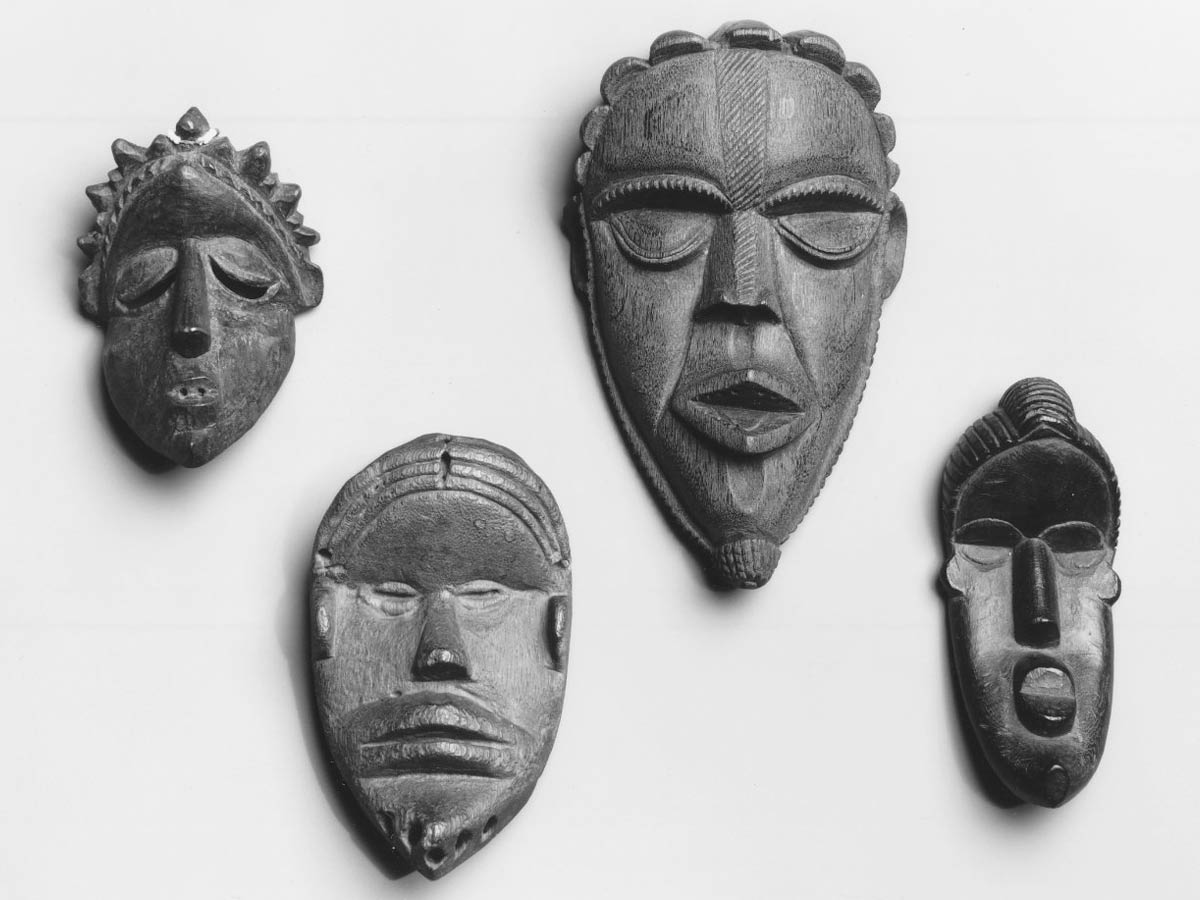
- Where They Are: United States
- Where They Belong: Liberia
Collectively, these two countries are holding over 600 artifacts that are thought to belong in Liberia. Masks, “divining sets,” and bracelets are just a few of the objects that the Smithsonian Nation Museum of Nation History has on display.
In Oxford, imitation glass leopard teeth and a bag made out of monkey skin are a couple of the artifacts that should be returned home. Liberia would like the objects back, but considering how far they’re spread, it’s difficult to know where to start.
Gwaegal Shield

- Where It Is: England
- Where It Belongs: Australia
During Captain Cook's voyage to Oceania, he came across multiple indigenous peoples...often with less than positive outcomes to say the least. During one encounter on the coast of Australia, the British killed Aboriginal individuals and took their spears and shields back to England.
The indigenous population obviously feels quicky negatively to their artifacts being seized during a moment of independent resistance.
The Rosetta Stone

- Where It Is: London
- Where It Belongs: Egypt
The famed Rosetta stone was discovered by the French in Rosetta, Egypt, in 1799. Featuring three distinct written scripts the stone has ancient Egyptian hieroglyphics at the top, Egyptian Demotic script at the middle, and Ancient Greek at its base. Because Ancient Greek was still widely understood by academics, the Rosetta Stone allowed for linguists to translate the Demotic and hieroglyphic portions. A complete understanding of ancient Egyptian hieroglyphics had been lost around the fall of the Roman Empire in the 300s and 400s. Thus, these translations allowed for a fuller study of other ancient Egyptian texts and inscriptions.
After Napolean's forces surrendered to the British, many French archeological discoveries became the property of the British Crown. It was then transferred to the British Museum. Egypt's first formal request for the Rosetta Stone to be returned was in 2003. In 2005, the British Museum presented Egypt with a full-size replica; however, the original still resides in the London.
Priam's Treasures

- Where They Are: Moscow
- Where They Belong: Turkey
These gold artifacts were believed, at the time, to be the treasures of King Priam, the legendary king of Troy during the Trojan War (according to Homer). Now that claim is largely disproven, but the cache of gold that was whisked away from modern Turkey by a German still haven't made their way back home.
They currently reside in the Pushkin Museum in Moscow.
Beard of the Sphinx

- Where It Is: Britain
- Where It Belongs: Egypt
We all know the image of the Sphinx, and how it regally stands in Egypt. We all know it misses its nose, but did you know that it was also missing its beard? In 1817, Giovanni Battista Caviglia excavated Giza and cleared parts of the Sphinx, which was buried up to the neck in sand. Expenses for the project was paid by a British Businessman with an agreement that finds were presented to the British Museum.
Skip ahead, the beard has been stored in the basement of the British Museum for over 160 years. Since then, there has been several requests that the beard be returned all the way back to the 80s. So far, it still sits in the British Museum, and there’s no deadline of when it will (and if) it’ll be returned.
Old Fisherman from Aphrodisias

- Where It Is: Berlin
- Where It Belongs: Turkey
A 2000-year-old Turkish marble torso, this statue was purchased at an art market and arrived at the Pergamon Museum of Berlin in a collection of antiquities in 1904. Turkey, however, claims it was looted.
Sadly, instead of being returned, Turkey has a large cast of the iconic marble statue in a museum at Geyre, Turkey. It features the same appearance but lacks the same depth that the actual statue displays. Turkey is still protesting its return, but will it ever come back?
Cambodia's Ancient Artifacts

- Where It Is: Everywhere Else
- Where It Belongs: Cambodia
In recent years, the Cambodian government has been struggling to return the hundreds of articles that had been stolen from the country over centuries. The tough part is that they reside all over the world in the United States, Western Europe, and Australia. Some of these artifacts were stolen by a Cambodian looting team and later sold to notorious art dealer, Douglas Latchford.
While he died before he was tried, the artifacts were still discovered. Four pieces, in particular, were found in the Denver Art Museum. Thankfully, the artifacts were returned as of 2021, although tons of pieces remain stolen. The pieces returned show the likeness of the goddess of transcendent wisdom, called the Prajnaparamita, and one of the sun god Surya.
Sion Treasure

- Where It Is: Washington D.C.
- Where It Belongs: Turkey
Sion Treasure is a collection of liturgical silverware and decorative objects discovered in Kumulca, Turkey. It currently resides at Dumbarton Oaks, a research institute located in Washington, D.C and owned by Harvard University.
Dumbarton Oaks claim that they acquired the treasure after it was purchased in 1963 from Switzerland by antiquities dealer George Zakos. Turkey seeks to reunite the Dumbarton Oaks objects with the rest of the Sion Treasure, but there hasn’t been any progress.
Portrait Head of Drusus Minor
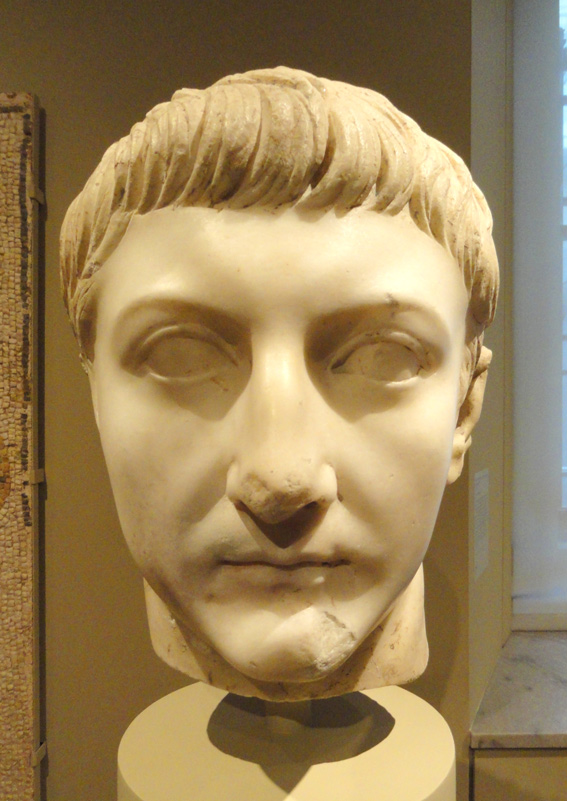
- Where It Is: Cleveland
- Where It Belongs: Italy
The Cleveland Museum of Art currently houses a portrait head of Drusus Minor, the son of Roman Emperor Tiberius. While the museum extensively researched to make sure the history of the piece was legitimate, later investigations have called its transfer of hands into question.
The museum has made tentative agreements to repatriate the piece to Italy, but as of now, it's still in Ohio.
The Remains of Geronimo

- Where They Are: Connecticut
- Where They Belong: Oklahoma
The famed Apache leader, who led multiple rebellions against the United States's encroachment upon American Indian lands, has a grave site at Fort Sill, Oklahoma.
However, the secret society of Skull and Bones at Yale is rumored to have dug up the skull of Geronimo. Descendants have filed a lawsuit requesting the return of the remains, though it has not reached a conclusion.
Preah Vihear Temple

- Where It Is: Thailand
- Where It Belongs: Cambodia
This Hindu temple dates back to the 900s CE. Its location along a disputed Cambodian-Thai border has led to trouble, however. Both countries claimed the temple and filed an ownership dispute with the International Court of Justice in The Hague.
In 1962, the court ruled in favor of Cambodia, but disputes over ownership began again in 2008 after violent clashes. Both countries continue to have artifacts from the temple, as well.
Victorious Youth

- Where They Are: California
- Where They Belong: Italy
After the museum's attribution practices were called into question, the Getty agreed to repatriate some Italian pieces back to their home country.
One major exception remains, however: Victorious Youth.
Fragment of Myron’s Samian Athena

- Where It Is: Kim Kardashian's House
- Where It Belongs: Italy
Who knew that Kim Kardashian would make this list, but here she is. Apparently, she purchased and imported a Fragment of Myron’s Samian Athena illegally. Italy wasn't too happy, and the Carabinieri (one of Italy's main law enforcement agencies) for the Protection of Cultural Heritage claimed that it should be returned.
The United States states filed a civil forfeiture action against the reality TV star, claiming the artifact is worth $750,000. Kim K, or rather her interior designer, claims that the statue "did not originate from Italy." Uh, then where did the Roman statue come from, dude? Just return the statue and call it done.
Various American "Artifacts"

- Where They Are: The White House
- Where They Belong: France
This one is a wild ride. Apparently, after the France fiasco in 2018, Ex-Pres Trump had a few hours to kill. He decided to tour the U.S. Ambassador's historic residence in Paris, and he took a liking to some of the pieces. Naturally, he brought them back to America. Turns out, not everyone was okay with that decision.
The State Department sent some pretty angry emails to White House officials, saying the art was government property. The White House claimed the items were worth up to $750,000, but the funny part is that they were all fakes. They were created by an artist in the 20th century who claimed they were from the 16th and 17th centuries. Whoops!
Gilgamesh Dream Tablet

- Where Is It: Washington D.C.
- Where It Belongs: Iraq
The Epic of Gilgamesh is an ancient Mesopotamian poem that's the earliest work of literature modern humans have ever discovered. It's believed to have been written between 2100 and 1200 BC and follows Gilgamesh, a fictional king, as he searches for the secret to immortality. A clay tablet that contains a fragment of the epic was looted from Iraq in 1991 after Saddam Hussein lost control of some regions of the country.
The tablet illegally passed hands among antiquities dealers until it was eventually obtained by Hobby Lobby for their Bible museum. After a 2017 settlement with the Department of Justice, the company agreed to return thousands of illegally imported clay tablets, including this tablet containing a fragment of the Epic of Gilgamesh.
 Author
Ron Winkler
Last Updated: October 22, 2024
Author
Ron Winkler
Last Updated: October 22, 2024

